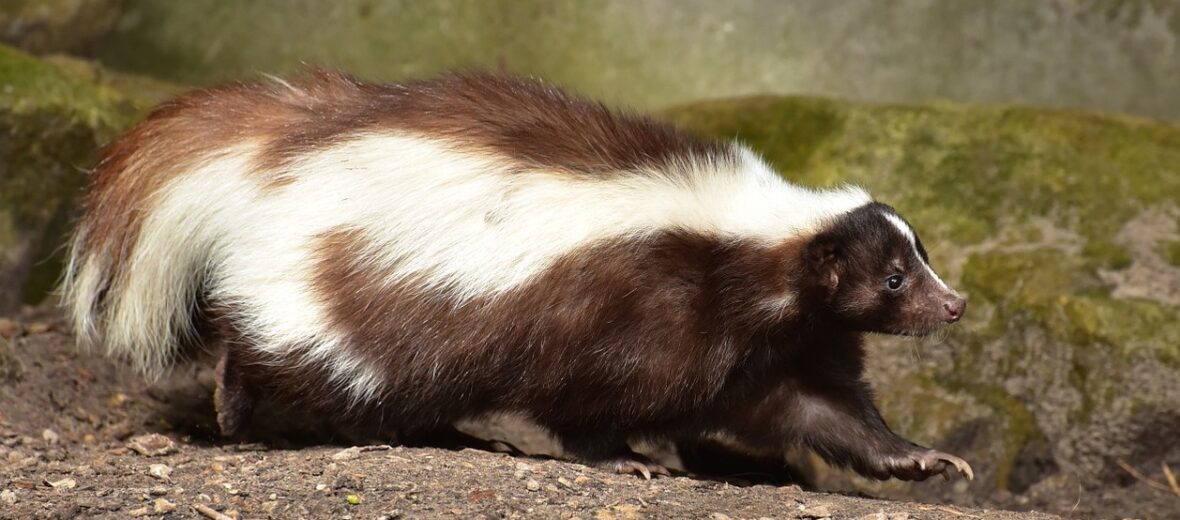
Easily recognized, not only by their telltale black and white coloring, but their aroma, the skunk is the animal kingdom’s smelliest critter… by far! These animals have been made famous not only due to their stink but also, in part, by the cartoon character Pepé Le Pew. In fact, the pirate Captain Jack Sparrow was loosely modeled on a cross between Pepé Le Pew and Keith Richards. They are found in Canada, the United States, Central America, South America, and Mexico. They can be found in woodlands, forest edges, grasslands, and deserts.
First the Stats…
Scientific name: Mephitidae
Weight: Up to 10 lbs.
Length: Up to 37 inches
Lifespan: Up to 10 years
Now on to the Facts!
1.) If the warning colors of black and white don’t do the trick to ward off predators, skunks will slap their tail on the ground, hop about, and even do a little jig. The spotted skunk will even do a hand stand before spraying.
2.) Their stripes point right to their business end.
3.) Skunks are nocturnal (active at night).
4.) There are 10 known species of skunks.
5.) 1 in 1,000 people experience anosmia, or insensitivity to a particular smell and are unable to smell the skunk’s aroma.
But wait, there’s more on the skunk!
6.) Tomato juice actually isn’t the best remedy for skunk spray. The best concoction is to use a combination of hydrogen peroxide and baking soda. Tomato juice only masks the scent. The afore mentioned elixir will actually counteract the smell.
7.) The spray of a skunk is so powerful that it can cause nausea, vomiting, temporary blindness, and can be detected for up to a mile or more away! The stench, if not cleaned off, can last for days or even weeks!
Did you know…?
A skunk can spray its oily, smelly fart juice an average of over 10 feet.
8.) Their spray is highly flammable! Bet you didn’t know that.
9.) A male skunk is called a buck, a female is called a doe, and a baby skunk is called a kit.
10.) They have poor eyesight, but they do have excellent sense of hearing & smell. They use these to look for food, including insects, larvae, worms, fruit, plants, eggs, reptiles, small mammals, and fish.
But wait, there’s still more on the skunk!
11.) Skunks can transmit rabies!
12.) After up to a 10 week pregnancy, the female gives birth to up to 2 – 10 kits.
Now a Short Skunk Video!
Also, check out the Critter Science YouTube channel. Videos added frequently!
Want to suggest a critter for me to write about? Let me know here.




Their spray is a mixture of sulfurus chemicals like thiols (aka mercaptans). It is so strong that it can even ward off bears!